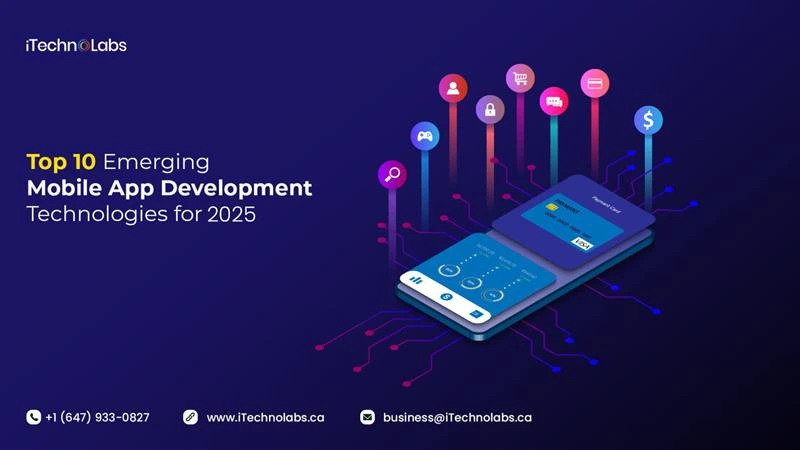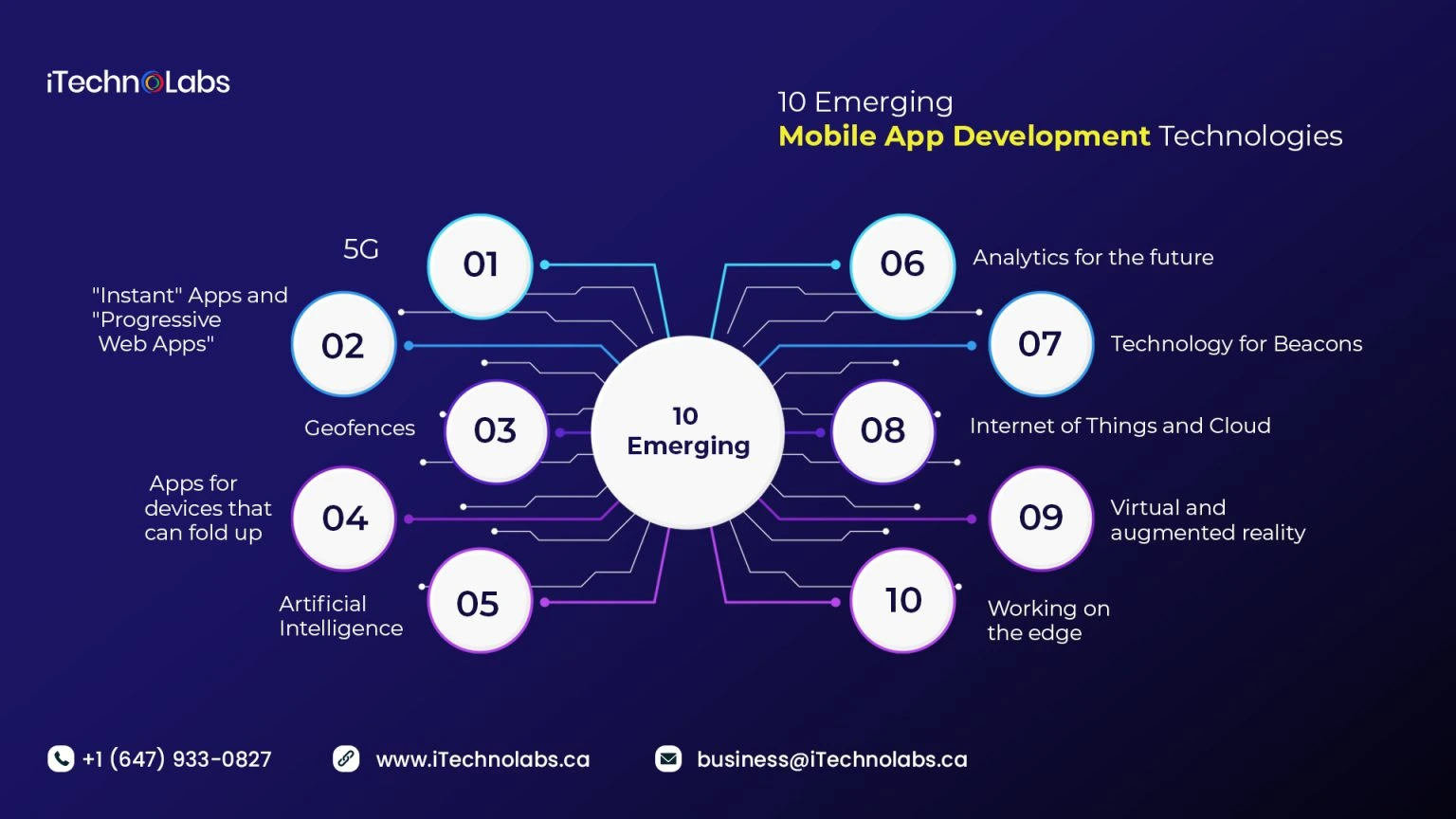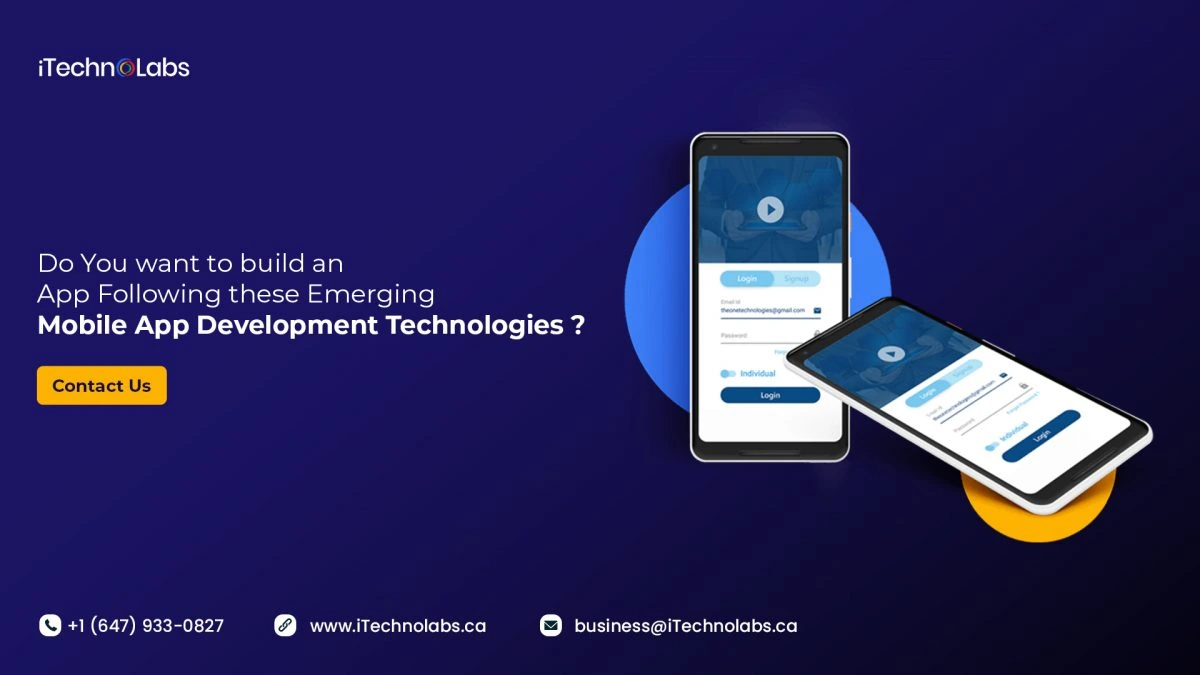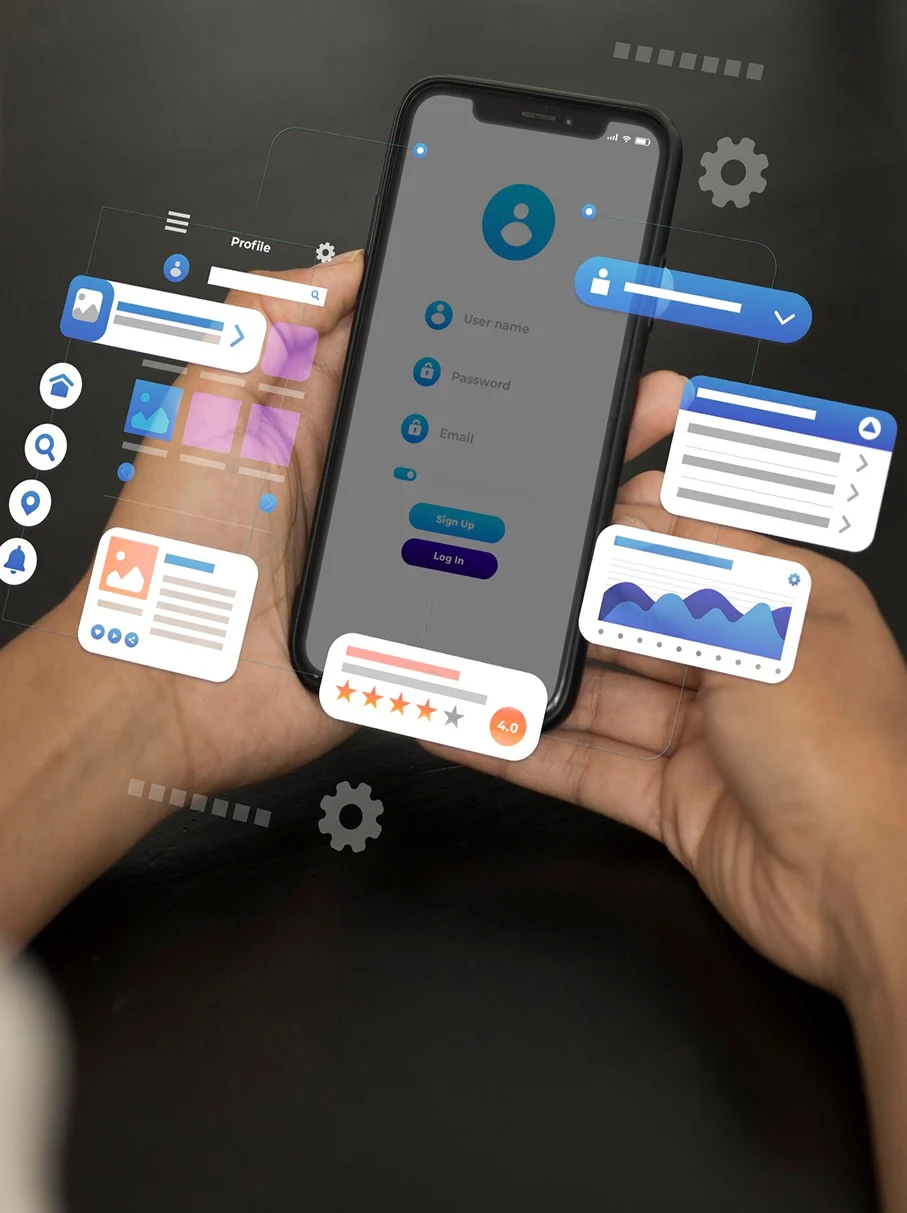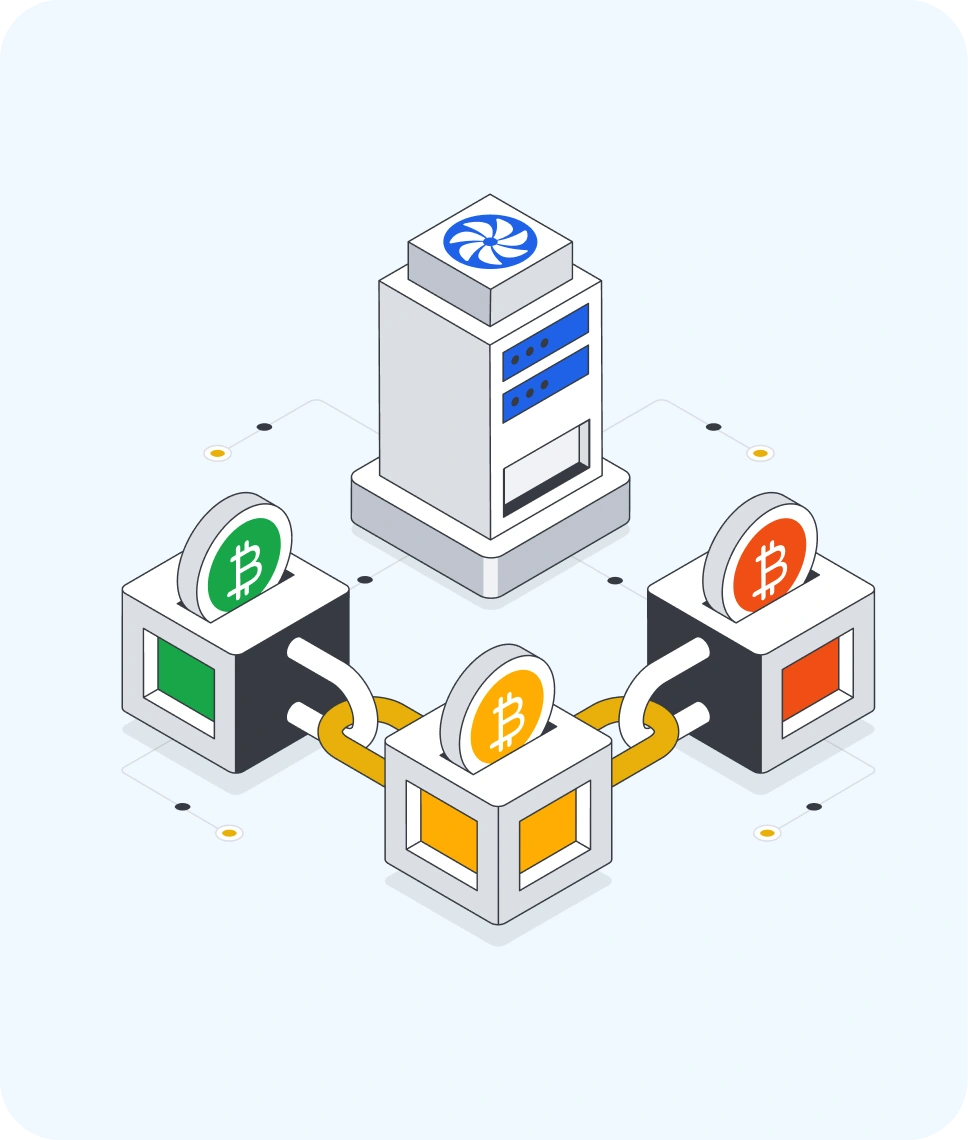If you want to be successful in business, you must know what’s going on.
In addition to researching your competitors, keep up with trends in your industry. We all know that our world is becoming more mobile.
Because of this, every business, no matter what kind, needs to keep up with new mobile trends. This is especially important for companies that have an app or mobile website.
Whether you make mobile apps or run a pizza shop, it’s essential to keep up with what’s happening in the mobile space.
This statement is valid even if you don’t have a mobile app. That’s because, if you aren’t already doing it, you should consider making mobile apps.
As mobile industry experts, we’ve picked the top Emerging Mobile App Development Technologies for the following year.
10 Emerging Mobile App Development Technologies
1. 5G technology
With lower latency, faster speeds, and faster data transfer, it’s easy to see why 5G technology is quickly becoming the standard for mobile technology by 2025.
As of mid‑2025, there are about 2.3 billion 5G smartphones in circulation—roughly half of all smartphones globally—compared to 660 million in 2023.
The fifth generation of connections for mobile phones:
- Makes apps work better and lets developers add more features without affecting how well the app works.
- Makes it easier and faster to connect augmented reality (AR) and virtual reality (VR).
- It speeds up and makes mobile payments safer.
- Makes mobile streaming better.
2. “Instant” Apps and “Progressive Web Apps”
PWAs are a mix between apps and web pages. One of the best effects of these apps is that they don’t take as long to make as regular apps because they are just websites with app features. On the other hand, you can save them to your home screen, making them more valuable than just web pages. withwith
PWAs are seen as the next big thing in app development because they offer benefits that make up for the problems with native apps. Some of this profit is that PWAs depend less on the Internet, take less time to load, and don’t take up much space. PWAs are also easy to use, supple, and routinely efficient.
During the coronavirus crisis, the importance of PWAs is made clear, especially in the eCommerce industry, where the number of people shopping online has risen dramatically. Several B2B and B2C companies have said that after building and launching their PWA platforms, engagement, conversion rate, sales, and revenue increased. AliExpress is one of them. Its conversion rate went up by 104% across all browsers. In the meantime, 50% of Flipkart’s new customers came from PWA, and 60% of their PWA visitors removed the native app to save space.
3. Apps for devices that can fold up
As of mid‑2025, global foldable smartphone shipments remain around 18 million units, accounting for only 1.5% or less of total smartphone shipments. While shipments peaked in 2023 at over 20 million, the market has since plateaued and is projected to decline slightly in 2025. This illustrates that foldable devices are still a niche segment.
When users unfold the device to get a bigger screen, this can be a good thing:
- A bigger screen gives you more room to show more details and make the experience more authentic.
- With multiple windows, a user can do more than one thing simultaneously.
Video streaming and gaming apps will benefit greatly from foldable devices because they can increase their screen size or increase the amount of information and controls in the available space. Therefore, developing apps with a keen consideration for the screen will be a significant trend in 2022 in mobile app development.
4. Artificial Intelligence
AI is one of the most Emerging Mobile App Development Technologies businesses use to make intelligent and useful apps for mobile devices. According to a study by McKinsey, $39 billion was invested in AI in 2016, and this number will only grow in the future.
AI is used in mobile apps to make them bright, learn how people use them, and make essential choices. In short, AI uses the data collected by the app to figure out how people use it and make the app better.
According to a survey by Gartner, the number of businesses using AI has grown by 270% in the last few years. This is because AI has many benefits and uses. It can be used in many different ways to make mobile apps intelligent and sound, such as
- Recommendations: Apps like Netflix, Amazon, and others use AI to suggest buying products and sometimes even life partners to choose from.
- Reasoning: Apps like Uber and Google Maps sometimes change their routes based on how busy the roads are. That’s artificial intelligence. AI uses its ability to think to help drivers make quick decisions in real time so they can give the best service to users.
Security Improvement: When AI learns how regular users act in an app, it can set rules to make the app safer. For instance, if a bad bot attempts to intercept your data or place unauthorized orders by impersonating one of your users, the AI will recognize the bot’s weird behavior and block the transaction at that point.
AI offers your app users a level of personalization that can produce increased relevance in ads, successfully predict user behavior, increase revenues, improve engagement, and much more in hopes of making your app a success.
5. Analytics for the future
Predictive analytics have been used for a while now to make mobile apps. Netflix employs predictive analytics to recommend movies and TV series based on user preferences. Amazon is precisely the same. But this technology will be used in new ways in the coming years.
Here are two places where this trend will become standard in 2025 and the years after that:
- Streamlining the app development process: Larger corporations and brands will utilize the analytics they have from developers to help develop predictions that will mitigate issues before they occur and provide actionable methods for the avoidance or handling of issues.
- Mobile apps will now utilize predictive analytics to shape the user experience, customizing and predicting user journeys.
Predictive analytics can help reduce the amount of time it takes to develop an application while continuing to provide a high-level experience and quality in the application experience.
6. Technology for Beacons
Since its introduction in 2013, beacon technology has scaled considerably. By 2025, the global beacon market is valued near USD 3 billion, with widespread deployments across retail, healthcare, logistics, and smart cities—although precise unit counts remain proprietary. Despite that, approximately 70% of consumers still aren’t aware that brands, stores, and advertisers leverage beacon-based proximity sensors to trigger push notifications on mobile devices.
But it’s not all just about retail. Beacons make things more personal. When a beacon is used for marketing a product, people are 19 times more likely to interact with it. Native apps that integrate beacon technology with the beacon signal will speed up conversion or improve how a customer interacts with a brand. Even augmented reality and mobile payments can be made with beacons.
Another way beacon technology could be used is to track and stop the spread of COVID-19. With the Exposure Notification API, both Google and Apple announced a way to find people using Bluetooth. Mobile devices can receive random beacons with this technique, which are then sent to a server and compared to a list of people who have been confirmed to have COVID-19.
7. Geofences
Geofencing is a technology that makes location-based marketing for mobile apps possible. With this technology, mobile app marketers can find out when users enter or leave a specific area to reach out to them at the right time. Here are a few examples of how marketers can make the most of this technology:
- Send push notifications when a customer walks by a store to get them to go there.
- Suggest products based on how customers have used the app in the past.
- Use social sharing to spread the word about your brand.
- Improve customer service by getting customer feedback or making it easier for customers and businesses to talk to each other.
Geofencing is likely one of the most common ways to reach your target audience. Because of this, brands are making the most of this technology. Adding geofencing to your mobile app can give your business an edge over the competition.
8. Internet of Things and Cloud
Global IoT spending has climbed beyond $1 trillion, with enterprise-focused IoT market revenue estimated at around $786 billion in 2025, and overall IoT industry revenue near $380 billion—highlighting that while spending has ballooned, defined revenue figures may differ depending on scope and reporting.
IoT has many benefits because it is based on the cloud. These benefits include better security, high efficiency, lower operational costs, and better connections to other platforms through APIs.
9. Virtual and augmented reality
AR and VR are expected to play a more significant role in mobile apps in the coming year because they offer the most immersive experience. This is true for entertainment, travel, tourism, games, and live streaming.
Although the AV/VR market was expected to grow from $12 billion in 2020 to $160 billion by 2023, by 2025:
The VR market segment is estimated at around $44 billion.
The broader combined AR + VR market likely exceeds $150 billion, consistent with a 2024 base of ~$114 billion and strong CAGR growth into the mid‑2020s.
AR and VR make the online shopping experience more personal by letting customers “see” how products fit into their lives. AR and VR are used in mobile apps today to get people to:
- Rugs and furniture
- Paint colours
- Clothing
- Hairstyles and colours
- Makeup
- Eyeglasses
If your business is contemplating adding AR or VR to its business model, you will want to consider a few questions before jumping in on this trend. New technology is exciting and unique, and therefore it makes sense to want to embrace it immediately.
However, before investing resources into augmented and virtual reality, you should be sure your business can benefit from them.
Also, read: How To Hire A Developer For A Project In 2025
10. Working on the edge
Businesses can benefit from both the cloud and big data. The first one has been called one of the best things about the Internet, but it’s getting old fast. The problem with the cloud is that it is very centralized, which makes latency a big deal for technologies that 5G promises. On the other hand, Edge computing is one of the best ways to keep these promises.
Edge computing is how the cloud has changed over time. It will move the cloud closer to the user by processing some of your computing needs locally or on the “edge” of the cloud, which is the station closest to you. And what does the cloud become? It just goes into your device and doesn’t go anywhere. When many people use edge computing, your device becomes part of the cloud. This takes care of some latency problems. This means that edge-powered devices will be the model for 5G’s “brave new world” of wireless, self-driving cars, and the Internet of Things.
Though by 2020 location-based services had already taken the lead among mobile edge computing use cases, by 2025 this trend had solidified, with location-based applications accounting for nearly a quarter of the global MEC market. The edge-computing industry reached about $45 billion in size in 2025, with services maintaining over 20 % revenue share and B2B scenarios (logistics, retail proximity, smart infrastructure) driving much of the growth.
Final Thoughts: The Future of Mobile App Development in 2025 and Beyond
Mobile app development landscape is no longer just about building apps in 2025—it’s about creating smart, immersive, responsive experiences that seamlessly connect to our lives.
With technology innovations like 5G, edge computing, AI, AR/VR, IoT, and predictive analytics all maturing quickly, businesses that adopt these innovations will continue to thrive.
Whether you are a developer, entrepreneur, or business leader, now is the time to look beyond the features of an app to discover how to leverage the simple but powerful new emerging experiences to maximize performance, personalize experience, and create new modes of engagement with your customers. Whether foldable devices or instant apps, beacons or geo-fencing, the hammers are here; all you need is the foresight to use them.
And remember: you don’t need to adopt every trend at once. But staying informed and being proactive will give you a competitive edge in a mobile-first, tech-forward world.
So, ask yourself: Is your mobile strategy ready for the next leap forward?
If not, 2025 is the perfect time to start building it.

